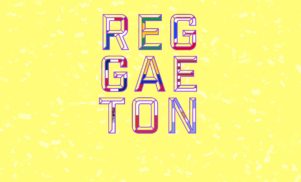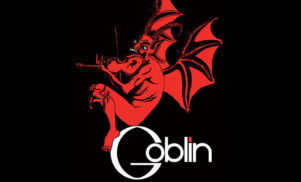If you’re into horror soundtracks and you haven’t yet come across Goblin, you’re undoubtedly doing something very wrong.
It would be safe to say that the band are the figureheads of the Italian horror genre and in 2013 are more popular, and indeed more influential than they ever have been at any time in the past. They probably never thought that their scores would serve as the touchpaper for metal, electro and experimental music but with each year that goes by, inexplicably, their star appears to get brighter and brighter.
Goblin rose from the ashes of a number of splintered Italian prog acts in the early 70s. Keyboardist and de facto frontman Claudio Simonetti and original drummer Walter Martino played together in Ritratto Di Dorian Gray, guitarist Massimo Morante was part of Era di Acquario and bassist Fabio Pignatelli’s was in Rivelazioni, and they initially decided on the moniker Oliver. After a failed attempt to hit the big time in London, Oliver returned home and inked a deal with Italian label Cinevox, who changed the band’s name to The Cherry Five (Simonetti claims: “I don’t know why they chose this name, it’s a mystery”), and released their self-titled debut album.
The record flopped, but it did speak to the interests of young auteur Dario Argento, who at the time was working on ambitious giallo (an Italian slasher/thriller subgenre) flick Profondo Rosso. Unhappy at the jazzy direction that composer Giorgio Gaslini was heading in, Argento brought The Cherry Five in to breath new life into the score, and it was the beginning of an explosive collaborative relationship – the band even changed their name to Goblin in an effort to fit in with their macabre career move. It’s tough now to think of Argento’s movies without Goblin’s innovative accompaniments, and for better or for worse, after Profondo Rosso they were intrinsically linked not just with the horror genre, but with a very specific (and later beloved) set of cult movies.
Goblin still attempted to indulge their progressive rock fixations on the occasional non-soundtrack album (1976’s Roller is particularly worthwhile) but it’s their unforgettable themes that have chiseled out their place in musical history. After countless lineup changes, arguments, live shows and litigation, the band are finally back to something resembling their original form. Claudio Simonetti and Maurizio Guarini (who has been playing keyboards with the band since 1975) have, at least for the time being, settled their differences and they just finished their first ever U.S. tour.
What this means for the future is anyone’s guess – in the past the band’s reformations have been depressingly short, but given that their current fan-base is now bigger than ever (thank you internet) we can at least reserve a shred of hope that after the slew of shows, Goblin might get back into the studio once again – Gaurini has certainly alluded to it in recent interviews. Until then, we’ve come up with a selection of their ten most crucial cuts.
Note: This list is a part of a series of Halloween-friendly beginner’s guides. Also profiled so far: the work of video nasty legend Richard Band; the essential releases by Italo horror go-to Fabio Frizzi; and the output of almighty composer/director John Carpenter.

Goblin
‘Profondo Rosso’
(From Profondo Rosso, 1975)
Profondo Rosso marked the beginning of one of horror cinema’s great collaborations, and it’s hard to believe that Simonetti, Morante and the crew got it so right on what was basically their first attempt at a fully-fledged soundtrack. Admittedly they had help – the band deconstructed composer Giorgio Gaslini’s original score, but they made it their own, lavishing it with creepy organs, chiming guitars and the kind of percussion that has crate diggers foaming at the mouth. ‘Profondo Rosso’ was a far cry from the chipper prog rock of the band’s previous full-length, and there couldn’t have been a better taste of what was to come. The fact that it served as the soundtrack to one of Argento’s most memorable movies? That’s just a bonus.
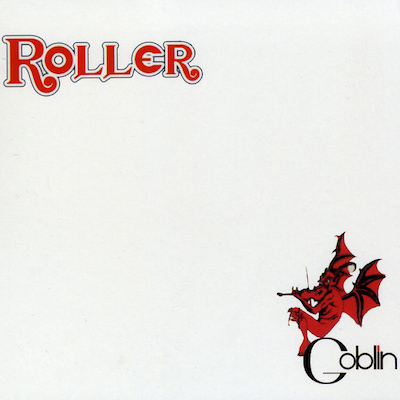
Goblin
‘Goblin’
(From Roller, 1976)
Here’s one for the prog lovers out there (we know you’re out there somewhere) – not only is it an 11-minute self-titled track (surely worthy of inclusion for that fact alone) but ‘Goblin’ manages to distill the band’s two distinct poles. It’s complicated and ambitious, indulgent and tricky, but it’s also chock-full of the kind of earnest synth-led caper that makes Goblin’s ’70s run so cherished even now. Even if you’re not already pre-disposed to losing your shit over early Yes bootlegs and Emerson, Lake and Palmer side projects, ‘Goblin’ is still an indisputable winner.

Goblin
‘Suspiria’
(From Suspiria, 1977)
To be quite honest, any track from Goblin’s stunning Suspiria soundtrack would have worked in this spot. Argento’s acclaimed 1977 chiller proved to be the perfect source material for the band, and they were finally allowed to indulge their more creative leanings with impunity. The film itself detailed a coven of witches hiding out at a ballet school, so the band fused twinkling music box sounds with pagan chimes, screams, chants and clattering percussion. It’s still arguably their most experimental soundtrack, and is their best loved for a damn good reason. If you’re looking for an entry point into the Goblin catalogue, this is it.
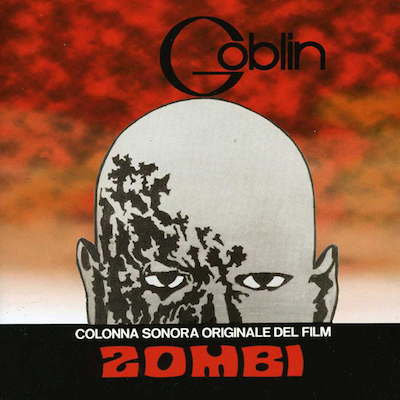
Goblin
‘L’Alba Del Morti Viventi’
(From Zombi, 1978)
Argento thought so much of Goblin that when George Romero asked him join the production team on Dawn of the Dead (known in Italy as Zombi), he immediately got the band involved to record an original score. Romero favoured library music (as evidenced on Dawn of the Dead’s predecessor Night of the Living Dead), and while he used only a small selection of Goblin’s cues, Argento made his own European cut of the film which utilized the whole thing. It’s surprisingly light hearted material for Goblin (whoever thought that ‘Safari’ was a good idea should probably be fired) but there are of course moments of sheer brilliance. Opener ‘L’alba dei morti viventi’ is pretty much the blueprint for the Italian zombie movie sound with its slow, plodding drums, static synthesized bass and spooky sampled choral sounds embellished with the kind of wibbly wobbly analogue lead that has come to signify the era. It would be hard to imagine that Fabio Frizzi didn’t have a good listen to this before crafting the score to its unofficial sequel. If you hear this and don’t immediately bring to mind images of shambling corpses in a shopping mall, you’ve probably already turned.

Goblin
‘Metamorfosi’
(From Patrick, 1978)
By 1978 Goblin’s reputation preceded them, and while commercial success still eluded the band (their full-length from earlier in the year Il Fantastico Viaggio del Bagarozzo Mark sadly did nothing) their status as horror soundtrack ‘fixers’ was unshakable. Producer Dino De Laurentiis brought the band in to attach a new soundtrack to Australian horror movie Patrick in an attempt to stoke Italian interest, and while the end result was a mix of old cuts (Roller’s ‘Snip Snap’ is a particular highlight) and slightly throwaway newer compositions, it’s still well worth a closer look. ‘Metamorfosi’ might not have any of the virtuoso flourishes that the band are best known for, but its gloomy, brooding synth work is a perfect example of why Goblin were so sought after to provide scores.

Goblin
‘Buio Omega’
(From Buio Omega, 1979)
In the late ’70s, Goblin founders Claudio Simonetti and Massimo Morante left the band, and while Maurizio Guarini did a fairly good job at the helm in Simonetti’s stead, there can be no denying that the quality dropped significantly. Simonetti took his leave to forward a moderately successful career in Italo disco, and his distinctive hooks were sorely missed. Buio Omega is probably the period’s most successful score, and while it occasionally veers pretty mercilessly into slippery funk pastiches, the opening track is an unmissable highlight of the band’s entire canon. There’s funk in there, certainly, but it’s tempered by buzzing arpeggiated synthesizers and… er… piano. Did we mention the film itself is about necrophilia? Now that’s funky.

Goblin
‘Connexion’
(From Contamination, 1980)
Another score from the band’s lost years; Contamination was pieced together to accompany Argento associate Luigi Cozzi’s (remember him) limp Alien pastiche and was predictably a mixed bag. While opener ‘Connexion’ shows the band on rare form, there’s notably more filler than on previous records – some of which was even snatched from the band’s previous score Buio Omega. ‘Connexion”s dusty analogue synth and organ combo fares markedly better than the movie itself and shows that the band can knock together biggies without Simonetti’s input every once in a while, you just have to dig a little deeper.

Goblin
‘Tenebre’
(Fron Tenebre, 1982)
If anything could pull Goblin back together, it was Dario Argento, and while 1982’s Tenebre soundtrack wasn’t initially released under the Goblin moniker (the band were credited as Simonetti/Pignatelli/Morante) it’s clear from the very beginning that it is pure Goblin. Even though we’re missing Maurizio Guarini, Tenebre still stands as one of the band’s finest offerings, and lead track ‘Tenebre’ is undoubtedly one of the band’s most memorable themes. The vocoder hook was no doubt dragged in by Simonetti under the influence of his day job as a disco innovator, and when you add in church organ and electronic drums, you’ve got yourself a classic.
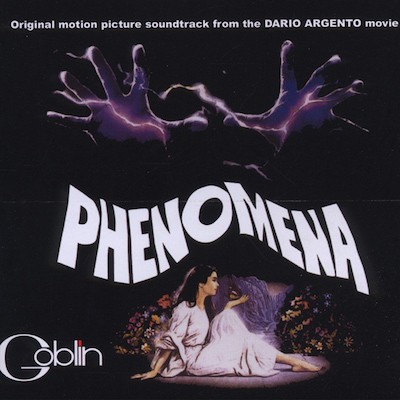
Goblin
‘Sleepwalking’
(From Phenomena, 1985)
It was yet again Dario Argento who coaxed Claudio Simonetti into putting the old band back together, and while this time he only managed to pull in bassist Fabio Pignatelli for backup, the two still managed to capture at least the essence of their long-standing partnership. Since there’s so little material from Goblin in the mid-’80s, Phenomena (known in the U.S. as Creepers) is really the only chance we get to hear Simonetti flexing his FM synthesis muscles and experimenting with the technology of the time. ‘Sleepwalking’ is plasticky and brittle, but retains the unmistakable Simonetti fingerprints that we wouldn’t get to hear again until 2001’s underwhelming Non Ho Sonno (aka Sleepless).

Goblin/strong
‘La Chiesa’
(From La Chiesa, 1989)
Whilst Fabio Pignatelli might have ‘only’ been the bassist, he remains one of Goblin’s most consistent members, resolutely sticking around in the the late ’70s/early ’80s period when Simonetti and Morante called it quits. On ‘La Chiesa’ he finally got the opportunity to handle things on his own, and surprisingly does a damn good job of it. The soundtrack itself split duties between Pignatelli and Emerson, Lake and Palmer’s Keith Emerson, and surprisingly Pignatelli manages to out-do his more famous peer without so much as a hesitation. ‘La Chiesa’ is an oddity in the Goblin canon, and an essential one at that.

